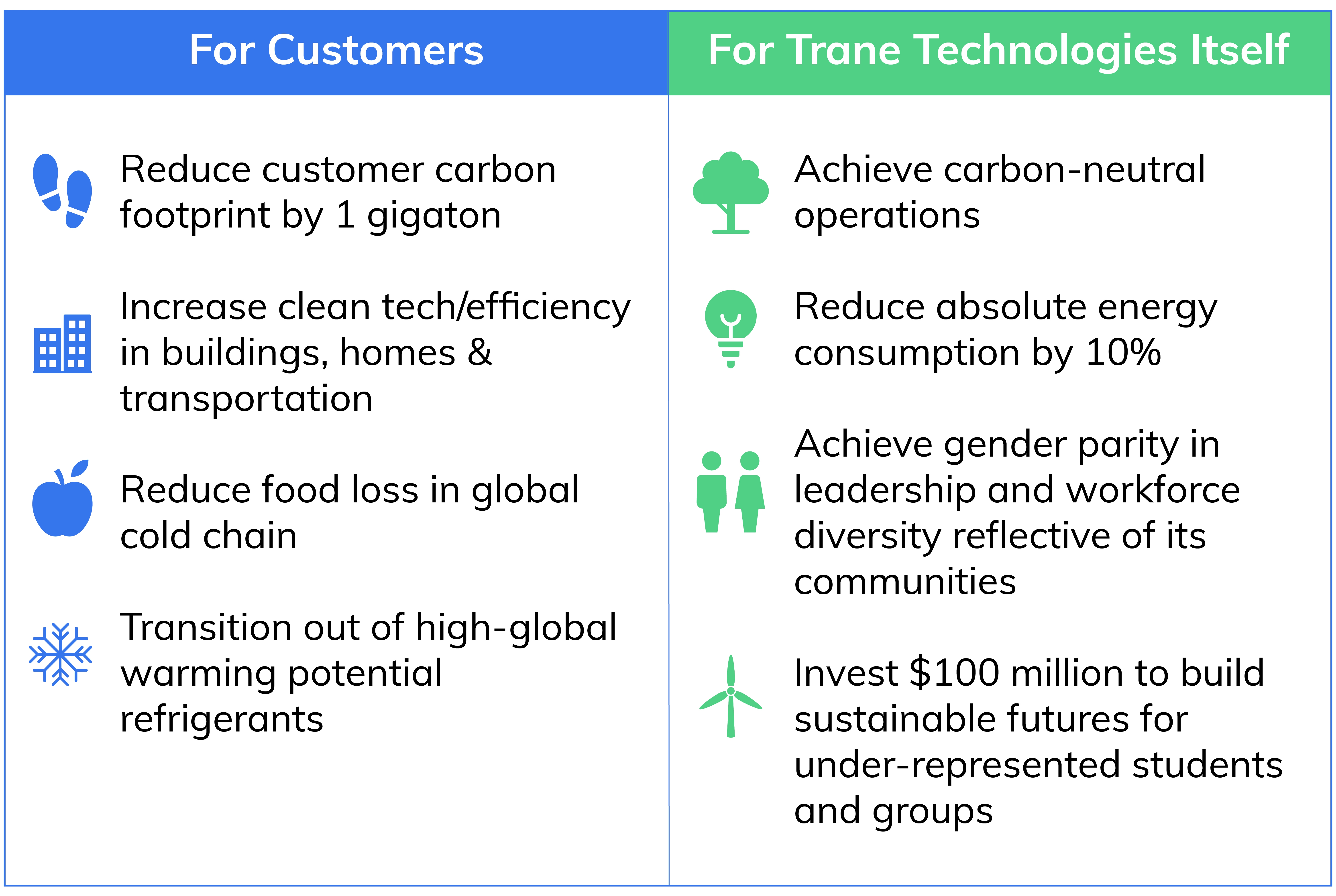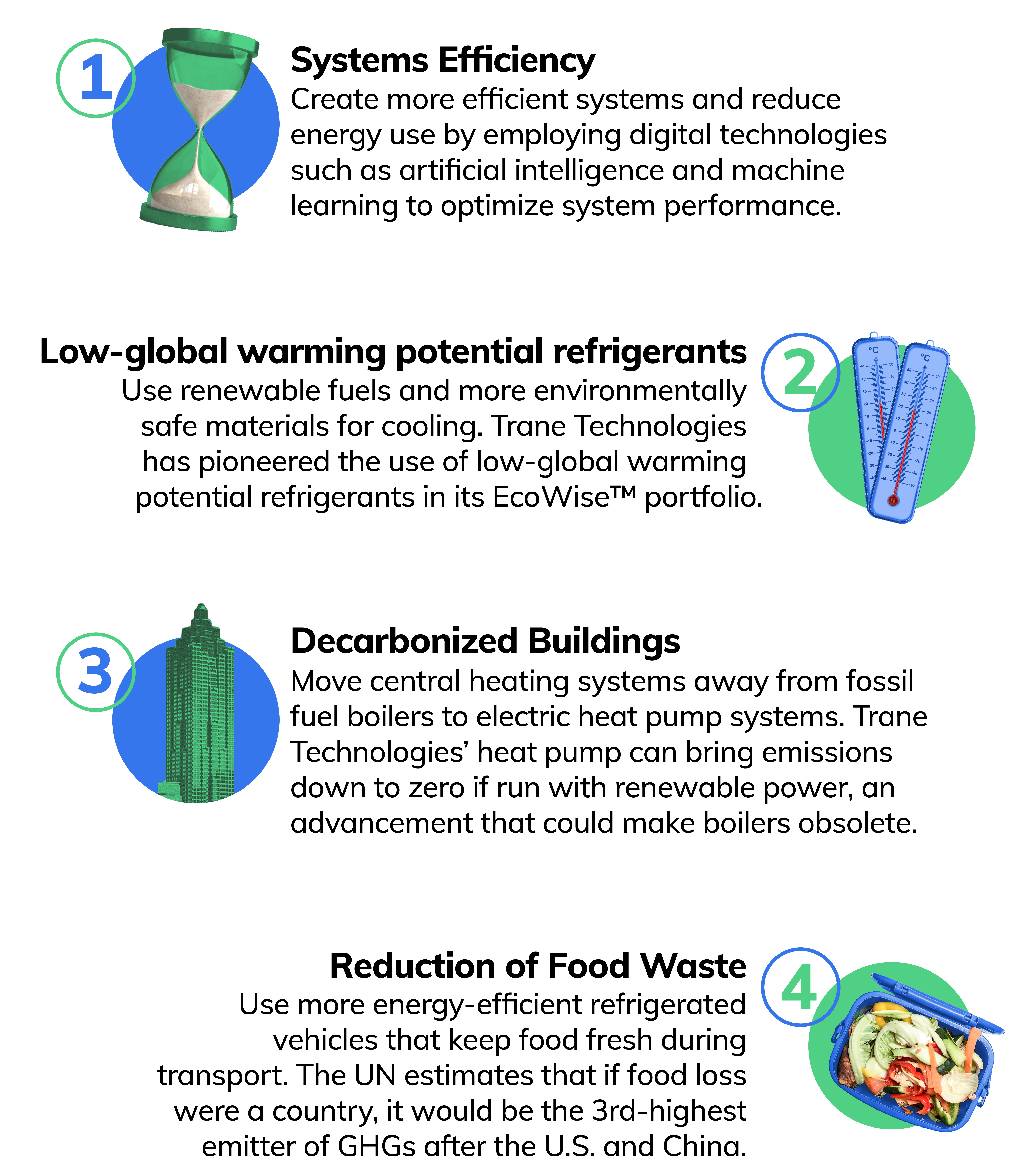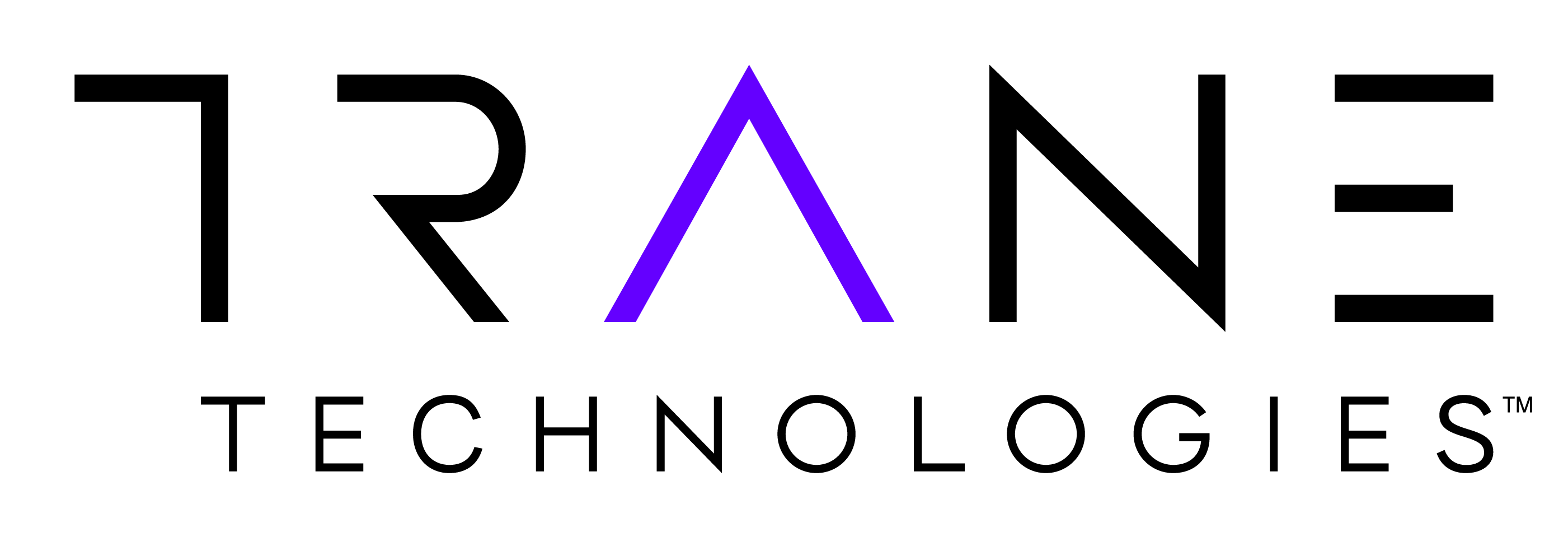Why Bold Climate Leadership Is the Path to Business Success
Lessons on how to grow your company and save the planet at the same time
Back in 2013, climate-systems manufacturer Trane Technologies turned up the heat on itself by setting ambitious sustainability targets – without a specific plan to meet them.
It was a risky move, made well before sustainability was fashionable in its sector. But it yielded amazing results: Almost a decade later, the heating, cooling and refrigerated transportation company has transformed itself into a global climate innovator, and achieved triple-digit growth in shareholder value.
And now, the Ireland-based company is sharing the hard-won lessons from its success, and encouraging other manufacturers as well as its thousands of customers across the globe, to take the leap into climate leadership.
‘No time to waste’
Trane Technologies leaders recognized early on that the climate change crisis demanded immediate actions, even though that meant meeting ambitious greenhouse gas (GHG) reduction targets on the fly.
“With heating and cooling responsible for 15% of global emissions and more from food loss, rapid growth of urban populations, and rising temperatures across our planet, we knew there was no time to waste,” said Scott Tew, vice president of the company’s Center for Energy Efficiency and Sustainability (CEES). “We had this tremendous responsibility and opportunity to change the game.”
Tew said there was certainly some doubt that the company could meet these 2020 targets — which included avoiding 21 million metric tons of customers’ carbon emissions and slashing its own operational emissions by 45%. But employees rose to the challenge and delivered on the goals two years early.
Innovation, value soars
Along the way, Trane Technologies became the first company to introduce solutions for low global-warming refrigerants. It also launched dozens of innovations through its Trane and Thermo King businesses, including electric heat pumps that can replace boilers, thermal storage that cools buildings with ice, smarter buildings via connected controls and electrification solutions for energy-efficient refrigerated transportation.
The innovations and efficiencies spawned by these goals yielded spectacular benefits: Trane Technologies delivered total shareholder returns of more than 700%, from 2010-2021, nearly twice the returns of the S&P 500. During this time, the company became recognized on Wall Street as a leading Environmental, Social and Governance (ESG) investment, and discovered that its climate-centered purpose and strategy is a huge motivator for employees.
“Our sustainability-focused strategy and singular shared purpose – to boldly challenge what’s possible for a sustainable world – has become the foundation for our growth,” said Trane Technologies CEO Dave Regnery. “We’re raising the bar for the entire industry with consistent top-tier financial performance, a customer-centric focus, our unique business operating system, and our unmatched culture.”
Hot off these successes, Trane Technologies has set even bolder sustainability commitments for 2030, including an industry-first Gigaton Challenge to reduce customer GHGs by a billion metric tons.
Meeting the Climate Challenge
A Major Impact


A Decisive Response
Trane Technologies steps up with new 2030 sustainability targets

Trane Technologies also joined the United Nations Framework on Climate Convention (UNFCC) “Race to Zero” by 2050, in line with the Paris Agreement. The company pledged to achieve net-carbon neutral emissions across its entire global footprint, and invest in workforce diversity and education in communities where it operates.
In 2020, after separating its Industrial businesses, Trane Technologies announced a new focused purpose completely tying its business strategy to ESG outcomes. The company’s growth is now inextricably linked to decarbonizing buildings and homes and providing safer, more sustainable ways to transport medicine, food and other critical goods around the globe.
Our sustainability-focused strategy and singular shared purpose – to boldly challenge what’s possible for a sustainable world – has become the foundation for our growth.
— Dave Regnery, CEO, Trane Technologies
4 ways to take a path to climate leadership
Trane Technologies has seen that one company can change an industry and one industry can drive transformative, global change for the better. To bring about that change, the company sees four practices essential to companies and industries that want to start the path to sustainability and demonstrate leadership:
1. Set aggressive and science-based targets
“If you aim high, the commitments become your North Star,” said Tew. “You need to set ambitious targets that are also achievable – creating the challenge will inspire your people to figure out what different actions or behaviors they need to take to meet it.”
The goals must also be credible and externally verified, explains Tew. Trane Technologies is the first in its industry to have its global GHG emissions targets verified by the Science Based Targets initiative, and one of only 47 companies in the world to have its targets verified twice.
The company also created its own “Gigaton calculator” to measure the impact of its actions.
2. Make it about the customer
Trane Technologies understood that achieving its business growth goals required helping customers lessen their carbon footprint.
Today, there is 2.4 trillion square feet of building space globally, much of which needs heating and cooling – this creates extraordinary potential to reduce HVAC-related emissions.
The company built its strategy around finding ways that its products and services can reduce energy and emissions for customers – this is where the Gigaton Challenge comes in. It requires investments in innovation geared toward these climate goals.
Its solutions go beyond equipment. “Digital technologies are key to increasing building performance and energy efficiency,” says Randy Newton, Trane Technologies Vice President of Engineering. “They create intelligent buildings that help our customers reduce energy consumption and keep their investment running optimally throughout its lifetime.”
3. Create a shared vision for climate solutions
The company also saw that if everyone in the company shared a single, meaningful vision, it could make huge leaps in climate innovation and impact. A recent survey by Deloitte found that climate change issues dominate concerns among Generation Z and Millennials, and that the global pandemic has increased young people’s interest in social issues.
In 2020, Trane Technologies found those climate concerns were deeply reflected in its own workforce after it invited thousands of its employees to participate in idea sessions around what the company’s culture should look like. Feedback showed that being part of a company with a shared vision to help solve climate change is a major motivating force.
Trane Technologies has found that the best way to get people engaged and excited is to ask them what they care about, says Mairéad Magner, Vice President of Talent and Organization Capability at the company. “Having a personal connection to our purpose and sustainability commitments not only provides employees with a common focus, it gives real meaning to the work we do each day while driving business success.”
The company also shares its climate vision externally — through goal-setting initiatives and the CEES organization, which builds relationships with Trane Technologies customers, government groups, agencies and nonprofits to develop insights around marketplace needs and create new solutions to reduce GHGs.
4. Make leaders accountable
Leaders are accustomed to having their compensation tied to business performance. Trane Technologies recently linked incentive compensation for thousands of its leaders to its Environmental and Social Governance (ESG) goals, including specific targets for GHG reduction and workforce diversity.
Every salaried employee also has at least one performance goal tied to sustainability.
“Linking ESG to compensation and performance evaluation reinforces the role that employees play in delivering on our sustainability commitments,” Magner says. “It makes it real, personal and creates accountability, which is really important right now. And it helps to sustain momentum. We will only see the impact of our work when there’s continuity.”
Paul Camuti, Trane Technologies Chief Technology and Strategy Officer, says that positioning one’s business as a climate trailblazer requires company leadership to stop viewing the climate crisis only in terms of risk—regulatory obligations to be met, or potential disruptions to be prepared for—and to start searching for opportunities that arise from climate innovation, such as:
- Increasing customer loyalty and employee engagement as you help both groups meet climate goals and reinforce values.
- Achieving a competitive edge with cost-savings and regulatory efficiency.
- Creating growth resiliency by becoming more forward thinking and more likely to launch industry-leading advances.
“If you asked somebody 15 years ago what they were doing on sustainability, they would say, ‘Well, I'm complying with the regulations,’” Camuti says. “I don’t think people get all that motivated by that. I believe people get really energized by thinking, ‘I’m going to make a big, positive impact today.’”
4 High-Impact Ways to Cut Emissions
Trane Technologies discovered these opportunities led to some of the most significant reductions in greenhouse gas emissions for its clients:

